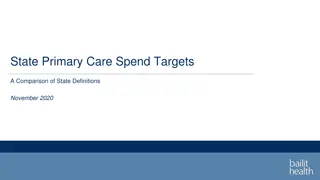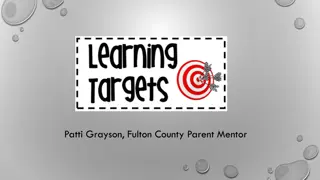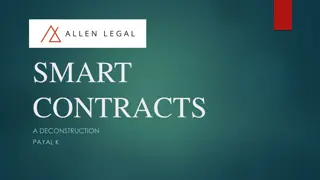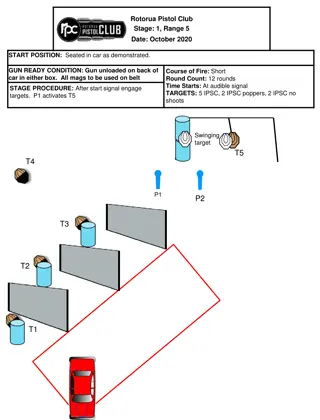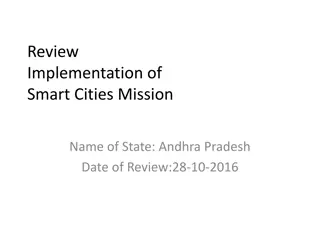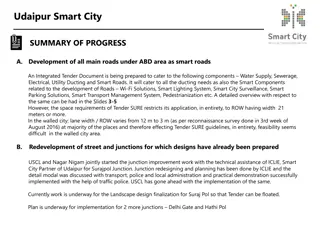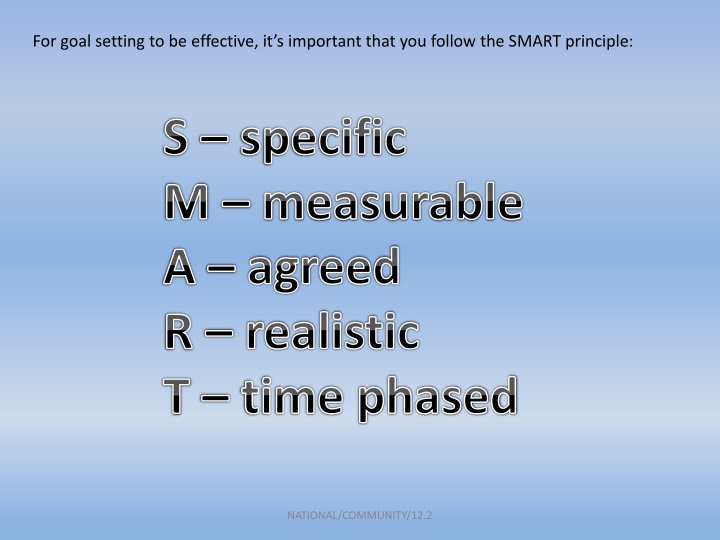
Effective Goal Setting Strategies: SMART Principle and Examples
Learn about the SMART principle for effective goal setting, focusing on Specific, Measurable, Agreed, Realistic, and Time-phased goals. Discover individual and group goal examples with clear objectives to achieve success in personal and community initiatives.
Download Presentation

Please find below an Image/Link to download the presentation.
The content on the website is provided AS IS for your information and personal use only. It may not be sold, licensed, or shared on other websites without obtaining consent from the author. If you encounter any issues during the download, it is possible that the publisher has removed the file from their server.
You are allowed to download the files provided on this website for personal or commercial use, subject to the condition that they are used lawfully. All files are the property of their respective owners.
The content on the website is provided AS IS for your information and personal use only. It may not be sold, licensed, or shared on other websites without obtaining consent from the author.
E N D
Presentation Transcript
For goal setting to be effective, its important that you follow the SMART principle: S specific M measurable A agreed R realistic T time phased NATIONAL/COMMUNITY/12.2
SPECIFIC Goals must be clear and specific. You therefore know exactly when you have achieved your goal. MEASURABLE Goals need to be assessed and therefore they need to be measurable. The more specific they are the more measurable they are likely to be. NATIONAL/COMMUNITY/12.2
AGREED - Goals that teachers / coaches and performers have talked about and shared are more likely to be achieved, because there is a common interest. REALISTIC Goals must be within reach of the performer so that motivation remains high. But if they are too easy it can be de-motivating because the performer may not try as hard. They must be challenging but realistic. NATIONAL/COMMUNITY/12.2
TIME PHASED Goals should be split into short term goals leading to long term goals. You need to set yourself a date where you want to have achieved your goal so that you have a time frame to work towards. This ensures goals remain realistic and achievable. NATIONAL/COMMUNITY/12.2
Here is an example of an individual goal and objectives My goal is to improve the standard of a year 7 pupil s reading by holding morning reading sessions with the pupil for a whole term. I will achieve this goal by: -Ensuring I am present and on time for each reading session. -Identifying the pupil s common errors. -Choosing suitable books for the pupil to target these errors. Here is an example of a group goal and objectives Our goal is to send boxes with Christmas presents to children in Romania via T4U . We will achieve this goal by: -Ensuring we work together effectively and complete our individual tasks. -Raising awareness within the school to ensure everyone knows why we are collecting the Christmas boxes. -Advertising and encouraging pupils to collect regularly in the weeks leading up to the date when we send the Christmas boxes. NATIONAL/COMMUNITY/12.2
My goal and objectives My goal is ......................... I will achieve this goal by: - - - NATIONAL/COMMUNITY/12.2










